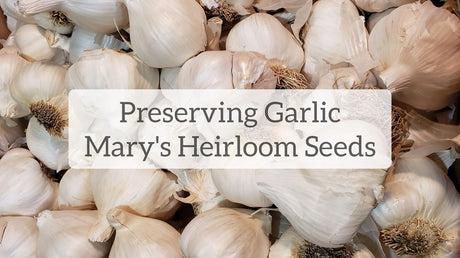
Preserving Garlic
Earlier this year during a live chat we discussed different ways to preserve garlic. It is important to mention that after you harvest garlic from your garden, it is important...
Mary Smith |
Welcome to our store Learn more

Earlier this year during a live chat we discussed different ways to preserve garlic. It is important to mention that after you harvest garlic from your garden, it is important...
Mary Smith |

Welcome to another installment in our Food Storage Prepping in the Garden series. Today our "crop talk" is beans. Specifically, dry beans. As I mentioned in the beginning of our...
Mary Smith |

Have you enjoyed our Prepping in The Garden series so far? As promised, we are adding a "print" version of our videos on our blog and including growing information for...
Mary Smith |

Welcome to our prepping in the garden series! Cowpeas are a very easy crop to grow and store. If you're look for a heat tolerant, fast maturing food crop, Cowpeas...
Mary Smith |

Welcome to Food Storage Prepping in the Garden! We have a few very important videos coming soon but today is just an intro. I will be sharing info on specific...
Mary Smith |
Over 1,000 varieties of Heirloom Seeds
Free Shipping on Qualifying orders of $20 or more
Planting guides to help you grow a successful garden